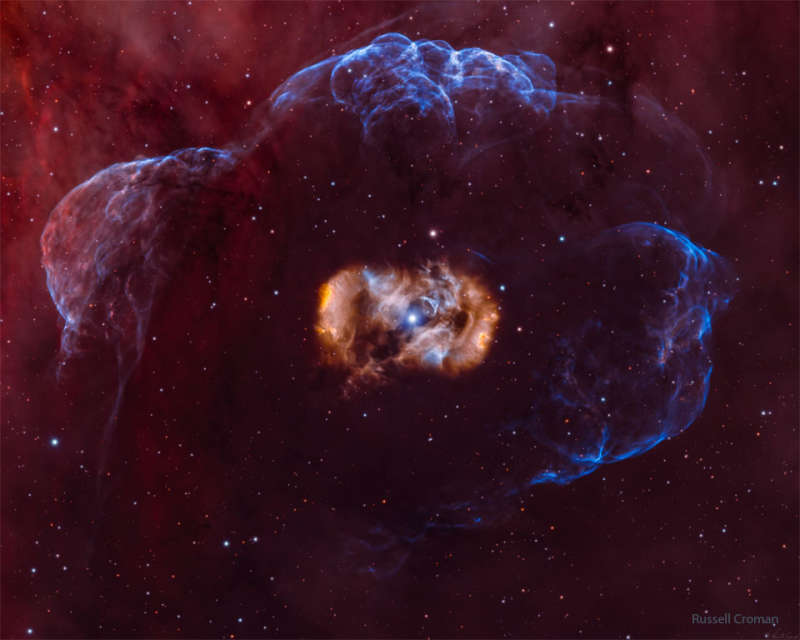Credit & Copyright: Russell Croman
Explanation:
The star at the center created everything.
Known as the
Dragon's Egg, this star -- a rare, hot, luminous
O-type
star some 40 times as massive as the Sun --
created not only the complex nebula
(NGC 6164) that immediately surrounds it,
but also the encompassing blue halo.
Its name is derived, in part, from the region's proximity
to the picturesque NGC 6188, known as the fighting
Dragons of Ara.
In another three to four million years the massive star will likely end its
life in a supernova explosion.
Spanning around 4 light-years,
the nebula itself
has a bipolar symmetry making it similar in appearance to more common
planetary
nebulae - the gaseous shrouds
surrounding dying sun-like stars.
Also like many planetary nebulae, NGC 6164 has been found to have
an extensive, faint halo, revealed in blue in
this deep telescopic image of the region.
Expanding into the surrounding
interstellar medium,
the material in the blue halo was likely expelled
from an earlier active phase of the O-star.
NGC 6164 lies 4,200
light-years away in the
southern constellation of the
Carpenter's Square
(Norma).
1999 2000 2001 2002 2003 2004 2005 2006 2007 2008 2009 2010 2011 2012 2013 2014 2015 2016 2017 2018 2019 2020 2021 2022 2023 2024 2025 |
Yanvar' Fevral' Mart Aprel' Mai Iyun' Iyul' Avgust Sentyabr' Oktyabr' Noyabr' Dekabr' |
NASA Web Site Statements, Warnings, and Disclaimers
NASA Official: Jay Norris. Specific rights apply.
A service of: LHEA at NASA / GSFC
& Michigan Tech. U.
|
Publikacii s klyuchevymi slovami:
halo - emission nebula - galo - emissionnaya tumannost'
Publikacii so slovami: halo - emission nebula - galo - emissionnaya tumannost' | |
Sm. takzhe:
Vse publikacii na tu zhe temu >> | |
